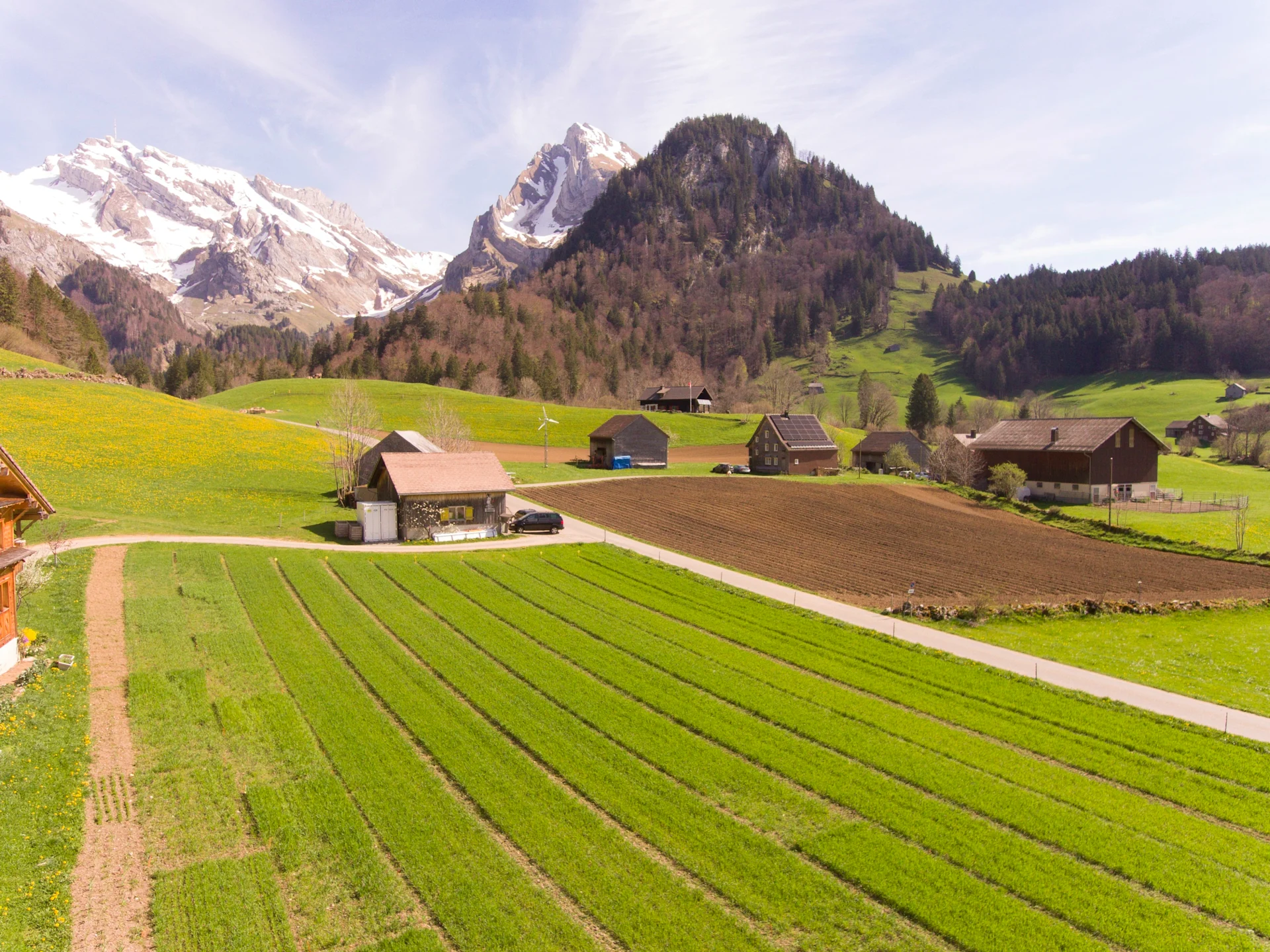
Farming
Will olives soon grow in Switzerland?
Temperatures are rising. But what does that mean for our agriculture? We take a look at the fields of the future.
navigation

Farming
Should the ban on genetically modified foods in Switzerland be upheld? ETH plant scientist Bruno Studer thinks not. He believes that new breeding methods can make farming more sustainable and robust.
I believe that the situation should be reconsidered. When the ban was introduced, almost 20 years ago, genetic engineering was still uncharted territory. At the time, it was difficult to assess the consequences of unregulated use. Thanks to countless studies, we now know much more about the benefits and safety of these methods.
It no longer fulfils its original purpose. First and foremost, we must define the term “genetic engineering” more precisely.
Because the methods have evolved. New breeding methods enable plants to be modified in the same way as they might have been in nature or through conventional breeding, albeit in a targeted and much more efficient way. How should we deal with such plants? We need more modern definitions and a clear distinction between what should and shouldn’t be permitted.
You can’t generalise like that. Here, too, we have to differentiate: are we talking about classical genetic engineering or new breeding methods? The latest studies show that a significant proportion of the Swiss have a positive attitude towards new breeding methods, provided that their use creates a specific benefit.
Reducing the use of pesticides in agriculture, for example.
I see a great potential for apples and grapes. Both are deeply rooted in Switzerland, but their production comes with a huge carbon footprint. Here, new breeding methods can help to improve resistance to diseases – such as scab or fire blight in apples or downy and powdery mildew in grapes – without forfeiting the desired properties of Gala apples or Pinot grapes. This would significantly reduce the use of pesticides.
The term itself is manipulative because it generates fear and isn’t very objective. All the cultivated plants that we know today have been created through the “manipulation” of genes and only resemble their ancestors in the broadest sense.
In many cases, new breeding methods offer a more efficient way to achieve goals such as improving the disease resistance of established apple, grape or potato varieties. They also open up completely new avenues that traditional breeding doesn’t offer, for instance reducing food waste by extending shelf lives or improving ingredients and thus product quality.
That depends on how these methods are used. More than 20 years of safety research have found not a single scientifically tenable example of adverse effects of genetically modified plants that can be attributed to the technology itself.
Nothing in life is without risk. However, in the case of genetic engineering and the new genomic methods in plant breeding, the risk is no higher than that associated with conventional breeding. This is the result of research programmes lasting many years, findings which have now been confirmed by thousands of studies.
Obviously. The decisive factor is how we define “genetic engineering” and “GMO-free” and differentiate the two. However, our real goal shouldn’t be for “GMO-free” farming, but rather for agriculture and our food industry to be sustainable. Given the global challenges, ignoring such technologies from the outset would not be the right approach.
The debate on the patentability of products derived from new breeding methods hasn’t been finalised yet. Whether or not we make ourselves dependent on large international seed producers and foreign countries ultimately depends on how our laws regulate the use of new breeding methods. This danger is especially great if we deny domestic plant breeders access to certain technologies by law or impose expensive approval procedures on small and medium-sized breeding companies.
They must inform their customers openly and objectively about this topic. Because they are committed to sustainability, they should examine how plants from new breeding methods can help them to reach this goal.
In principle, mandatory labelling is desirable in order to guarantee that consumers are free to choose. However, the necessary subsequent separation of the flow of goods along the entire supply chain would mean a lot of extra work. This effort would be hard to justify for products that are similar to those from conventional breeding. What’s more, using such labelling to create transparency is controversial.
In many cases, such labels are either overlooked or even misunderstood. They therefore don’t help people make more informed decisions.
I’m convinced of that. The debates are already considerably less tense than they were in the past. Many initially critical voices, such as organic pioneer Urs Niggli, for example, now recognise the potential offered by these technologies. It is the sensible applications that will help to create a more objective approach to this topic.